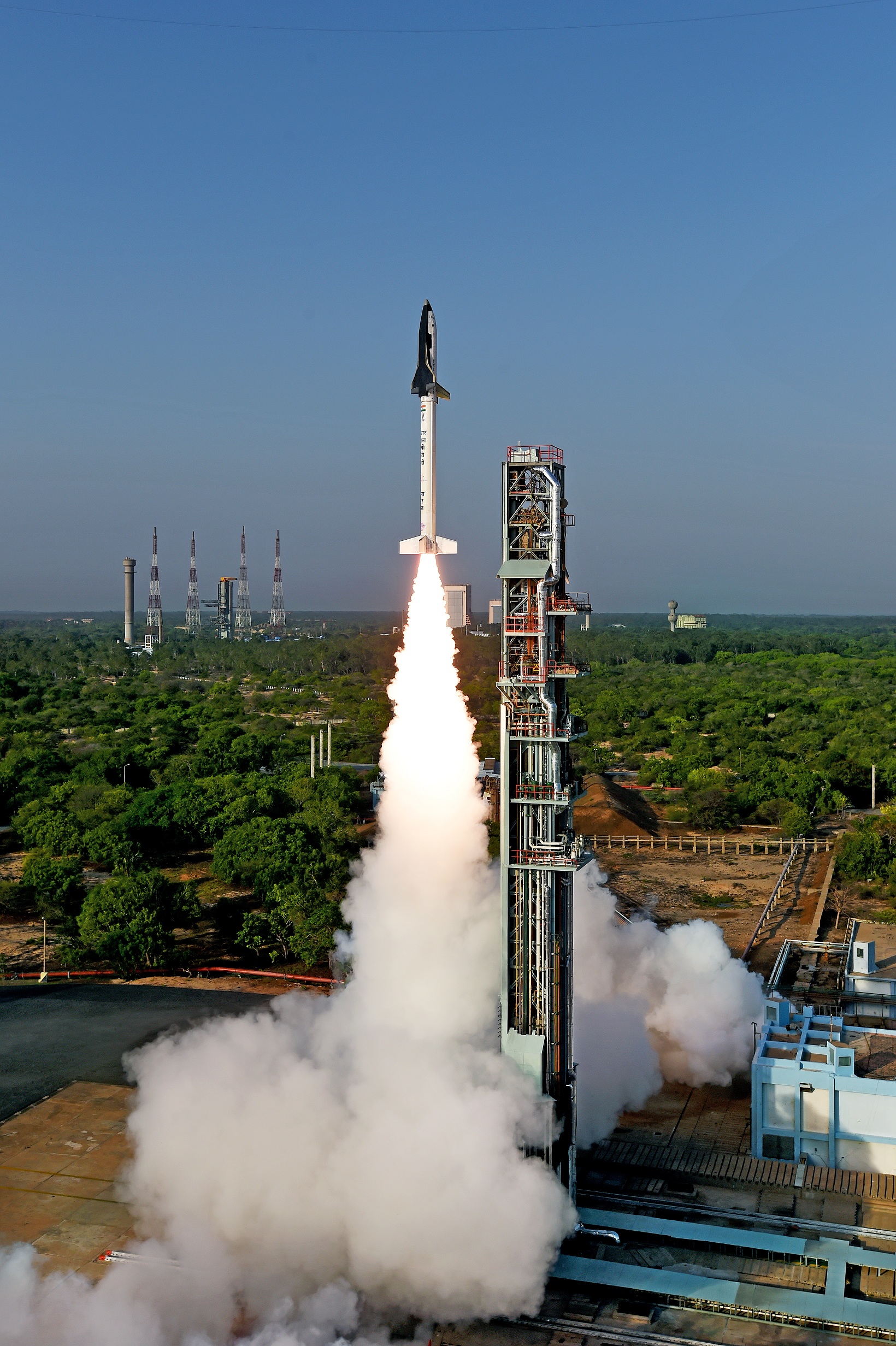India Test Launches Its Reusable Launch Vehicle Techonology Demonstrator
I have blogged extensively about the Indian space program. They are far behind the U.S., Europe, Russia and China but they are making respectable progress. Recently they carried out a test launch of their space shuttle.
On Monday of May 23rd, 2016, the Indian Space Research Organization (ISRO) successfully launched what they refer to as a Reusable Launch Vehicle Technology Demonstrator (RLV-TD) or space shuttle in common terms from the Satish Dhawan space center pad at Sriharikota on the southeast coast of India. An Indian HS9 booster rocket carried the RLV-TD aloft. The fourteen million dollar un-manned one sixth scale model rose to a peak altitude of forty miles and then made a controlled descent at Mach 5 into the Bay of Bengal after a thirteen minute flight. During the descent, it was exposed to temperatures of two thousand degrees Centigrade. The RLV-TD was brought down in the sea about two hundred and eighty miles from Sriharikota because the ISRO does not have a landing strip that is long enough to handle the RLV-TD.
A spokesman for the ISRO said that they had been working on the project for ten years and that the last five years were spent on design and development of the actual vehicle itself. A statement from the ISRO said that "In this flight, critical technologies such as autonomous navigation, guidance and control, reusable thermal protection system and re-entry mission management have been successfully validated."
Before an Indian RLV can actually be launched into space, it will need to have a body of better and stronger material to withstand the rigors of launch and reentry. When the working model of the RLV-TD has been developed, it will be used to put satellites in orbit and to take astronauts into space. The ISRO wants to install a scram jet in the working model of the RVL-TD which would increase its range and allow it to maneuver in space. The ISRO does not expect to have an operational RLV-TD before 2030. The next step in the project is to analyze the data that was gathered during the mission. ISRO hopes to be able to launch the RLV-TD again soon to gather more data.
The Indian shuttle is being developed to make space missions cheaper and easier. Although other countries such as the U.S. have given up on the use of winged space shuttle, India hopes that the shuttle it is developing will bring down the cost of space flight as much as ninety percent for India. India wants a piece of the multi-billion dollar satellite launch industry and the RLV would be a big step in the development of the India space industry.
The Space Review, an online journal from Washington, D.C. cast doubt on the importance of the test launch. They said that the launch of the RLV-TD was "blown out of proportion." The Indian aviation expert who wrote the article pointed out that the ISRO itself said that the mission was just a demonstration and a "baby step" on the road to a reusable space shuttle. He blamed the Indian media for hyping the test launch as a major advancement for the Indian space industry. The writer called into question the economics of space shuttle development for India considering the huge cost of space shuttle development in other nations.
Launch of the RLV-TD:
